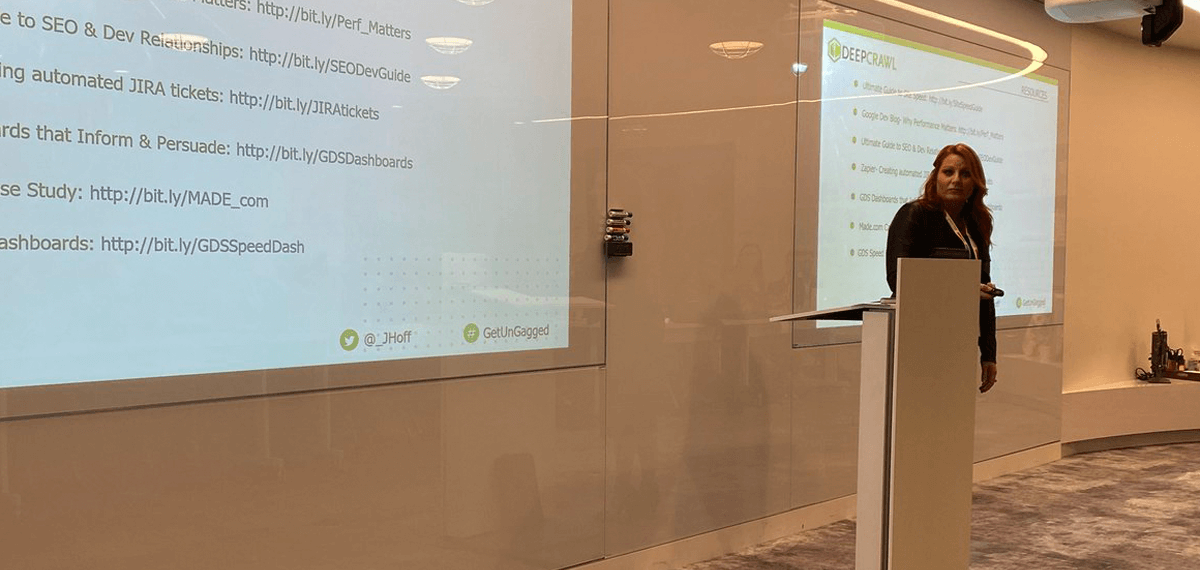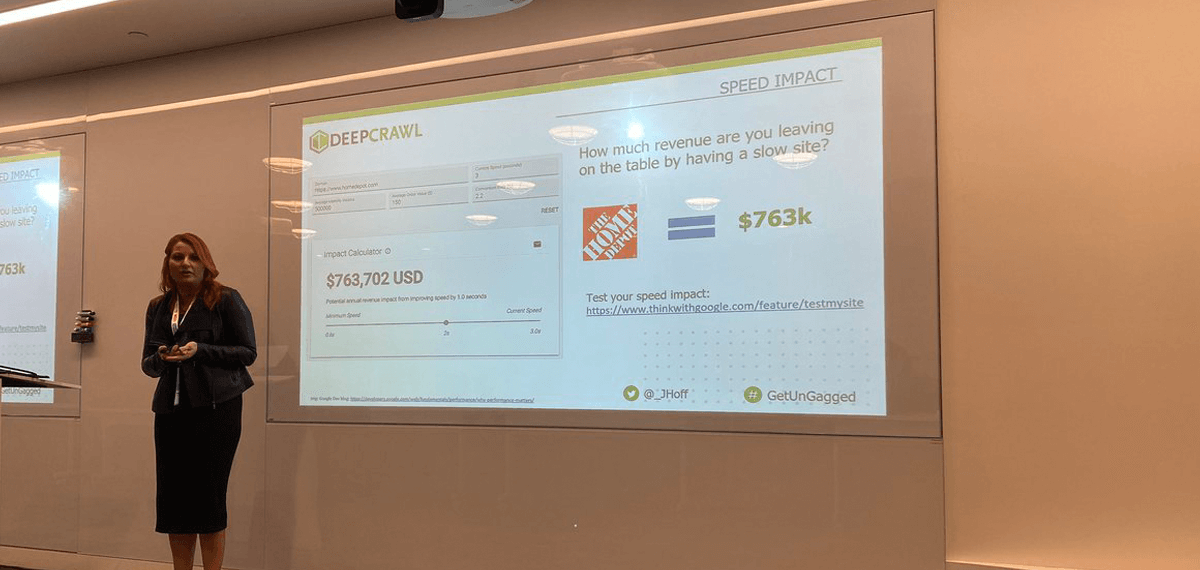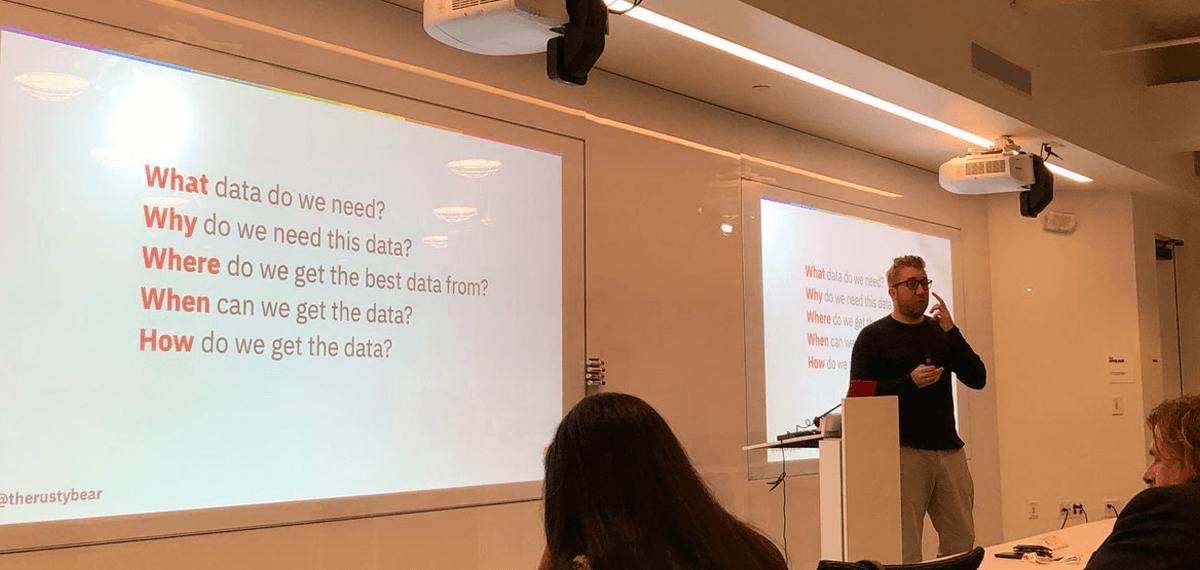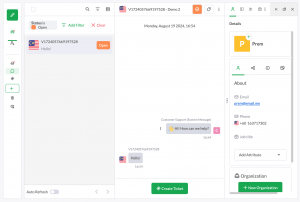Dubbed the Ultimate Digital Marketing ‘Unconvention’, this year’s edition of UnGagged in Los Angeles gathered experts in SEO, analytics and online marketing. With more than 40 sessions and keynote speeches, there was plenty of valuable information on offer.
Here are our key takeaways from the event.
Ask the right questions
Russel McAthy of Ringside spoke about the importance of marketing data for brands that need smarter decision-making. When turning data into actions, he recommends asking the following questions.
1. What data do we need?
2. Why do we need this data?
3. Where do we get the best data from?
4. When can we get the data?
5. How do we get the data?
When using platforms such as Google Analytics, the answers to these questions complement what Dana DiTomaso of Kick Point presented in her keynote. To get the most out of Google Analytics, you have to know what you actually need. In particular, these questions can optimize the results from Google Analytics:
What is your goal? Phrase it in the form of a question. By asking goals in the form of a question, you’re opening yourself up to telling a story via data.
Which platform brings us the highest value clients?
What data do you need to answer this question?
What dimensions and metrics do you need?

Think about the big picture with SEO
It’s apparently very common for SEO practitioners to take on small budgets in their departments. Jennifer Hoffman of DeepCrawl believes, however, that they have a responsibility to show the value of their work to management and those making the budget decisions and convince them that SEO plays a key role in the business.
To achieve this, Jennifer suggests following these three solutions:
1. Report on metrics that impact the business’s goals
Along with the standard sessions/user data, reporting on metrics like conversion rate, average order value, lifetime value, and customer acquisition cost will paint a clearer picture for those in control of your budget.
Once these measurements are laid out, it’s time to identify the stakeholders in the SEO practice and what they want to see from the data.
The CMO influences customer experience, brand recognition and market share.
The CTO is into innovation, team efficiency and risk mitigation.
The CFO makes decisions on budgeting, financial forecasting and compliance.
The CRO works on new revenue, client retention, churn prevention.
Creating custom dashboards for each individual to view the same data based on what’s important to them can have a dramatic impact on how they receive the information. Know your audience and make it work for you.
2. Align with your dev team and build a great relationship with them
Since developers keep building technologies that we need to learn how to maintain, not aligning with them can result in wasted time, inefficiency, delay in SEO implementation, potential loss in traffic and rankings and loss of revenue.
So how can you align your team with your Dev team?
Find out how they prefer to work.
Identify the communication channels they use.
Look for opportunities to automate processes.
Human connection isn’t something you can do by numbers though. You’ve also got to get to know them, send them pizzas during a hackathon or take them out for an activity or a few drinks.
Another important step is to do your best to keep up to date with the developer community. Read about developer conferences and subscribe to a few developer blogs to make sure you’re up to date.
3. Think about the user’s journey when planning for SEO
Google is looking to provide a positive user experience for its customers regardless of what that means for us and our websites. Jennifer quoted Stephan Spencer, “SEO isn’t dead: it’s just a shape-shifter. You need to solve for your user, not for the search engine!”
All channels should lead to your site. These include email marketing, brochures, business cards, webinars/seminars, events, SEO, social media, blogging, and advertising.
With all these channels leading to your site, loading speed is crucial.
In fact, Jennifer presented survey results on customer expectations. What makes a good website?
Loading speed ranked first with 75 percent, followed by how easy it is to find what they’re looking for. Aesthetics came in last with a site’s attractiveness only scoring 24 percent.
Speed, according to Jennifer, translates to profitability. HomeDepot, for example, is leaving $763,000 on the table… Per second just because their site is slow to load.

Get better results with localized SEO
Andrew Shotland of Local SEO Guide shared his insights on how to achieve better results with localized SEO. In relation to Jennifer’s observation about the small budget allotted to SEO teams, local marketing always gets the crumbs in every channel or marketing category according to Andrew.
Localization is one of the biggest trends in search marketing today. However, most marketers miss out on taking advantage of it. For instance, local Search engine results pages (SERPs) are being favored more by search engines and he predicts that soon, most SERPs will be localized.
Some recommendations Andrew shared with the audience include:
1. Localized sites with more text and images on the pages tend to rank higher in search engine results.
2. For local SEO basics, it’s necessary to have a website with location pages, a Google My Business page, relevant links as well as citations.
3. Only bid on your brand terms and monitor organic traffic.
4. Choose the correct category for your GMB page, add a UTM tracking code and nest listings on one location to make it more relevant.
5. Create links to eCommerce categories from location landing pages.
6. Add “near me” in your SEO keywords to get an extra 2 percent traffic.
Gary Illyes of Google agrees that brands should create content for users instead of for search engines. According to Gary, buying links won’t solve a site’s ranking issues. Instead, the people behind it should work on addressing existing issues such as speeding up the site and rewriting page titles.
Food for thought
Jenny Halasz of JLH Marketing shared an interesting analogy: keep everything in moderation when ranking on Google, much like being disciplined with one’s diet.
Picking up whatever the new fad diet is, leads to short term gains, unhealthy results, poorly balanced impacts and leaves you with little in terms of results.
Compare that to the plate method in dieting, which is similar to focusing on business results. You’re more likely to find long-term success due to balancing everything.
To do this, Jenny recommends adopting the E.A.T. principle, or Expertise, Authority and Trust.
Expertise involves the author’s value (original reporting, known authors, bios/bylines) and credentials such as being cited in other areas and links to certifications.
Authority includes links (page rank, hubs and authorities) as well as mentions (Nofollow links, Known brands, recency/buzz).
Finally, trust is about accessibility (ALT text, mobile-friendly, few ads), quality (site architecture, redirects, few technical errors), reputation (reviews and ratings), and content relevance (TF-IDF, Word2Vec and BERT).
Jenny advised audiences to balance what they E.A.T. through public relations, social media, customer service and ads.





